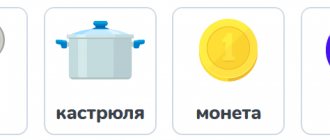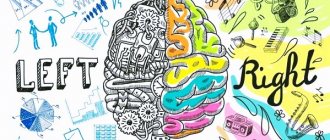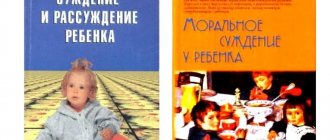Intelligence... With this word, many of us feel a kind of pride, since it is known that a person possesses it to the highest degree. Some even think that intelligence is something that only humans have. We will have to disappoint them: animals also have intelligence. Some even try to speculate about its presence in plants and other groups of organisms, but so far this has not gone beyond the bounds of science fiction. Recently, developments in the field of artificial intelligence have achieved great results.
What is intelligence
Intelligence is the mental ability of the body, expressed in the ability to solve various problems, cope with problems, carry out cognitive activity, adapt to changing environmental conditions and manage it.
Intelligence is manifested in educational, research, work activities, communication and social life in general. This concept unites individual cognitive abilities: sensations, perception, memory, ideas, thinking, imagination, will, reflection, attention.
The concept of intelligence arose relatively recently - only at the end of the nineteenth century. At that time, psychology was developing at a rapid pace, and researchers were studying the mental abilities of humans and animals. Sometimes they made serious mistakes. Thus, at that time, the prevailing belief was that a person uses only a few percent of his brain, while the rest of it remains unused. In everyday life, this idea still persists, but it is fundamentally incorrect and was refuted by science a long time ago. But how could such an assumption even arise? The fact is that at the end of the nineteenth century the functions of a significant part of the brain were not yet studied, and researchers could not understand what they were needed for. In addition, some processes in the brain occur as if in an automatic mode, without the participation of human consciousness. That is, it seems to us that some part of the brain is inactive, but in fact it carries out extremely important work unnoticed by us, without which, probably, intelligence itself would become impossible.
However, the issue of the relationship between intelligence and the brain is quite complex. Does man have intelligence? Of course there is. But does a cat have it? Probably there is too. What about the lizard? One might think that she has it too. What about an ant, a microbe, a plant? At first glance, it seems that the more developed the organism, the more we can talk about the presence of intelligence. But here, too, not everything is so simple.
Ants, like all other insects, do not have a brain at all. Their "brains", dispersed throughout the body, are a primitive nerve cluster. And the entire structure of the ant organism is very primitive. Meanwhile, some even seriously compare the intellectual abilities of ants with those of humans. Ants can accumulate and transmit information, communicate, learn, and they have a complex hierarchy. They can navigate the terrain; recent research shows that they apparently can even count. In ant society there are many “professions”, the variety of which varies for each species. In fact, the life of an anthill is very reminiscent of human society.
A lizard is an organism of a completely different kind. Its overall development is tens of times more complex and organized than that of an ant. And there is a full-fledged brain, and a fairly developed one at that. But the intellectual abilities of a lizard are very modest and cannot be compared with the intelligence of an ant (and even more so a human).
It turns out that intelligence is more of a function than a certain material structure. Intellectual activity can be realized in various ways.
How is this function implemented? The implementation of an intellectual function occurs through the work of its components: this is the ability to find connections between disparate data, synthesize and analyze, compare, classify, build associations, etc. Each such ability separately does not form intelligence, it can only be discussed in the aggregate of these abilities .
Features of the human intellectual system consist of several parameters:
- Working memory capacity, ability to predict, use tools, logic;
- Multi-level hierarchy of selection of valuable information - six layers of neurons are involved in this;
- Consciousness;
- Memory.
Intelligence does not appear suddenly and on its own, but develops over time. The intellectual level of a person can be increased through special techniques; it can also decrease due to various circumstances (old age, head injuries, mental illness, etc.).
Summary
To summarize the article, I would like to add that, despite the fact that IQ is largely determined by factors that do not depend on a person (genetics, environment, gender, race, etc.), the intellectual abilities of almost every person can be trained, in other words, they can be developed.
Currently, many different developmental programs have been developed that can increase a person’s intelligence, for example, intellectual games, puzzles, tests, and various trainings. In addition, there are many ways in which you can increase your IQ without resorting to special programs. This includes banal reading of books, solving crosswords and scanword puzzles, watching educational TV shows, and even communicating with smart and developed people and eating right.
Every person has the power to increase their level of intelligence. The main thing is to constantly learn and not stand still. And for additional motivation, you should always remember that people with a high IQ are much less susceptible to various diseases and live longer.
We also recommend reading:
- Storytelling
- Japanese system of intelligence development
- Types of tests and their features
- Koos Cubes
- How to become smarter: 4 types of intelligence according to Stephen Covey
- General Intelligence Factor
- What You May Not Know About Intelligence
- Amthauer Structure of Intelligence Test
- Factors in a child’s intellectual development
- Gardner's Theory of Multiple Intelligences
- Wechsler test
Key words:1Cognitive science
What types of intelligence are there?
A major researcher in the field of intellectual development, Raymond Cattell, believed that intelligence should be divided into two types - mobile and crystallized. The first is based on logical operations, the ability to solve problems that go beyond the limits of existing experience. The second is based on accumulated experience and the ability to use existing knowledge and skills.
There is also a division into emotional and social intelligence. The first is the ability to recognize and understand your own emotions and the emotions of those around you. The second type is the ability to understand people's behavior. Social intelligence is the most important part of a person’s social life; it allows you to interact with other people and build various relationships. Researchers emphasize that the purpose of such intelligence is not depth of understanding, but social adaptation.
The diversity of types and forms of intelligence can be judged, for example, by the cultural characteristics of different peoples. For example, the Negroid race has the most highly developed concrete visual and plastic thinking. The people of Africa are good artists and excellent dancers; they can depict by hand what Europeans are accustomed to depicting only with the help of computer graphics. Drawing and dance in Africa play the role of original “alphabets” from which special languages are composed. European thinking is abstract. Painting and dance in European culture are considered an art, that is, a skill accessible to few; at the same time, the sound-letter alphabet, reasoning in abstract categories, understanding of such phenomena as law, justice, order, etc. are developed. The Asian peoples of the Mongoloid race are carriers of “symbolic” thinking. Their symbolic (hieroglyphic) alphabet and system of allegories have reached a high level of development; the culture is replete with symbols that lack practical meaning and express complex ideas, and rituals and ceremonies play a significant role in behavior.
There are other ways to divide intelligence. Thus, they distinguish between logical and spatial intelligence, and the latter is divided into physical, social, spiritual, creative, and emotional.
Bibliography
- Anastasi A., Urbina S. Psychological testing. – St. Petersburg: Peter, 2001. – 688 p. – (Series “Masters of Psychology”).
- Druzhinin V.N. Psychology of General Abilities - St. Petersburg: Peter Publishing House, 1999. - 368 pp.: (Series “Masters of Psychology”).
- Eliseev O.P. Workshop on personality psychology - St. Petersburg: Publishing House "Peter", 2000. - 560 p. – (Series “Workshop in Psychology”).
- Maklakov A.G. General psychology. – St. Petersburg: Peter, 2002. – 592 p. – (Series “Textbook of the New Century”).
- Shapar V.B., Timchenko A.V., Shvydchenko V.N. Practical psychology. Tools. – Rostov n/d: publishing house “Phoenix”, 2002. – 688 p.
Levels of intellectual activity
There is such a thing in psychology as levels of intellectual activity.
Researchers identify three such levels:
- Stimulus-productive – when mental activity is caused only by the influence of external factors.
- Heuristic is a spontaneous cognitive activity that leads to the discovery of a number of patterns.
- Creative is the highest level of mental activity, at which there is a full penetration into the essence of the things being studied, solving existing problems and setting new tasks.
At the first level, intellectual activity is limited to a given or initially found path. A person can study various phenomena and solve various problems, but only as private ones, without connection with each other. At this level, however, the intellectual can put forward quite bold hypotheses.
At the second level, the researcher can compare disparate phenomena and problems and find something in common in them, identify new patterns. In this case, knowledge occurs empirically.
At the third level, comparing different phenomena and finding what they have in common becomes not just a separate technique, but is itself a problem that requires deep insight into the essence of things. In this case, the researcher uses the theoretical path of knowledge.
Intellectual actions of an individual are divided into levels in another way.
In this case, there are two levels:
- Personal actions at the level of a social individual, while human activity is determined by the task and desired results.
- Actions of a creative person; in this case, the result turns out to be broader than the stated goal and gives rise to new tasks.
The activity of the individual gradually ceases to be a response to the initially set task and takes on a creative character.
The division of the work of the intellect into levels also reflects the history of the development of mental activity in humans. That is, the first people passively solved the problems facing them, formed by nature itself, and strived for biological survival; knowledge was more of an adaptive nature. Subsequently, primitive “scientific” activity appeared, when, through searches, trial and error (empirically), people found new patterns in the structure of the surrounding world and tried to use them in their practice. Finally, at the very latest time, a theoretical science was formed that had a developed methodological apparatus and deep criteria for knowing the truth.
For clarity, you can also use Maslow’s famous pyramid, which reflects the hierarchy of human needs. It shows that the need for creativity and spiritual development is the highest, and to achieve it you need to go through lower levels. In accordance with this, the intellect works: at first it is aimed at achieving pressing goals and solving specific problems (finding food, housing, achieving material well-being), then opportunities arise for learning something new, and at the highest level the opportunity arises for creative activities.
Methodology for determining the level of development of children 6-9 years old.
Purpose: to study the level of mental development of children of primary school age.
The test consists of four subtests, including verbal tasks:
I subtest - a study of the ability to distinguish essential features of objects and phenomena from unimportant ones, as well as an assessment of the test subject’s stock of knowledge; II subtest - a study of the abilities of generalization and abstraction, as well as highlighting the essential features of objects and phenomena; III subtest - a study of the ability to establish logical connections and relationships between concepts; IV subtest - identifying the ability to generalize.
Procedure: The tasks are read aloud by the experimenter, the child reads simultaneously to himself. It is best to conduct this test individually with the subject. This makes it possible to find out the reasons for the child’s mistakes and the course of his reasoning with the help of additional questions.
Text of the methodology
I. Instructions: “Choose one of the words in brackets that correctly completes the sentence you started.”
a) The boot has... (lace, buckle, sole, straps, button). b) In warm regions lives... (bear, deer, wolf, camel, seal), c) In the year... (24, 3, 12, 4, 7) months. d) Month of winter... (September, October, February, November, March). e) The largest bird... (crow, ostrich, falcon, sparrow, eagle, owl). c) Roses are... (fruits, vegetables, flowers, tree). g) The owl always sleeps... (at night, morning, afternoon, evening), h) Water always... (clear, cold, liquid, white, tasty). i) A tree always has... (leaves, flowers, fruits, roots, shadow). j) City of Russia... (Paris, Moscow, London, Warsaw, Sofia).
II. Instructions: “Here there are five words written on each line. Four words can be combined into one group and given a name. One word does not belong to this group. This “extra” word must be eliminated.”
a) Tulip, lily, bean, chamomile, violet. b) River, lake, sea, bridge, swamp. c) Doll, teddy bear, sand, ball, shovel. d) Kyiv, Kharkov, Moscow, Donetsk, Odessa. e) Poplar, birch, hazel, linden, aspen. f) Circle, triangle, quadrilateral, pointer, square. g) Ivan, Peter, Nesterov, Makar, Andrey. h) Chicken, rooster, swan, goose, turkey. i) Number, division, subtraction, addition, multiplication. j) Cheerful, fast, sad, tasty, careful.
III. Instructions: “Read these examples carefully. They have two words written on the left that are somehow related to each other. On the right is another group of words: one word above the line and five words below the line. You need to choose one word below that is related to the word above, just like the words on the left. For example: forest / trees = library / garden, yard, city, theater, books run / scream = stand / be silent, crawl, make noise, call, cry So you need to establish, firstly, what connection exists between the words on the left, and then establish the same connection on the right side.”
a) cucumber / vegetable = dahlia / weed, dew, garden, flower, earth b) teacher / student = doctor / bed, patients, ward, thermometer c) vegetable garden / carrot = garden / fence, apple tree, well, bench, flowers d ) flower / vase = bird / beak, seagull, nest, egg, feathers e) glove / hand = boot / stockings, sole, leather, leg, brush e) dark / light = wet / sunny, slippery, dry, warm, cold g) clock / time = thermometer / glass, temperature, bed, patient, doctor h) car / motor = boat / river, sailor, swamp, sail, wave i) chair / wooden = needle / sharp, thin, shiny, short, steel k) table / tablecloth = floor / furniture, carpet, dust, board, nails
IV. Instructions: “These pairs of words can be called in one word, for example: Pants, dress ... - clothes. Come up with a name for each pair: a) Broom, shovel... b) Perch, crucian carp... c) Summer, winter... d) Cucumber, tomato... e) Lilac, rosehip. f) Wardrobe, sofa... g) Day, night... h) Elephant, ant... i) June, July... j) Tree, flower...
Correct answers: I subtest: a) sole b) camel c) 12 d) February e) ostrich f) flowers g) during the day h) liquid i) root j) Moscow
II subtest a) beans b) bridge c) sand d) Moscow e) hazel f) pointer g) Nesterov h) swan i) number j) delicious
III subtest h) dahlia / flower b) doctor / patient c) garden / apple tree d) bird / nest e) boot / leg f) wet / dry g) thermometer / temperature h) boat / sail i) needle / steel j) floor / carpet
IV subtest a) working tools b) fish c) season d) vegetable e) bush f) furniture g) time of day h) animal i) months of summer j) plants
Processing the results
I subtest: If the answer to the first task is correct, the question is asked “why not a lace?” If the explanation is correct, the solution is scored 1 point, and if the explanation is incorrect, 0.5 points. If the answer is incorrect, the child is given help - he is asked to think and give another, correct answer (stimulating help). For the correct answer after the second attempt, 0.5 points are given. If the answer is again incorrect, the child’s understanding of the word “always” is determined, which is important for solving 6 out of 10 tasks of the same subtest. When solving subsequent tasks of subtest I, clarifying questions are not asked.
II subtest: If the answer to the first task is correct, the question is asked: “Why?” If the explanation is correct, 1 point is given; if it is incorrect, 0.5 points are given. If the answer is incorrect, assistance similar to that described above is provided. For the correct answer after the second attempt, 0.5 points are given. When answering the 7th, 9th, 10th (g, i, j) tasks, additional questions are not asked, since children of primary school age cannot yet formulate the principle of generalization used to solve these tasks. When answering the 7th (g) task of subtest II, an additional question is also not asked, since it has been empirically found that if a child solves this task correctly, then he knows such concepts as “first name” and “surname”.
III subtest: For the correct answer - 1 point, for the answer after the second attempt - 0.5 points.
IV subtest: If the answer is incorrect, you are asked to think again. The estimates are similar to those above. When solving subtests III and IV, clarifying questions are not asked.
When processing the research results for each child, the sum of points received for completing each subtest and the total score for the four subtests as a whole are calculated. The maximum number of points that a subject can score for solving all four subtests is 40 (100% success rate). In addition, it is advisable to separately calculate the overall total score for completing tasks on the second attempt (after incentive assistance).
Interpretation.
An increase in the number of correct answers after the experimenter invites the child to think more may indicate an insufficient level of voluntary attention and impulsive responses. The total score for the second attempt is an additional indicator useful for deciding which group of children with mental retardation the subject belongs to. The success rate (SS) for solving verbal subtests is determined by the formula: SS = x • 100% / 40 where x is the sum of points received by the test taker. Based on the analysis of the distribution of individual data (taking into account standard deviations), the following levels of success were determined for normally developing children and students with mental retardation: 4th level of success - 32 points or more (80-100% GS), 3rd level - 31, 5-26 points (79.0-65%), 2nd level - 25.5-20 points (64.9-50%), 1st level - 19.5 or less (49.9% and below ).
Methodology for determining the mental development of normal and abnormal children (7-9 years old)
(Zambatsevichene E.F. Towards the development of a standardized methodology
to determine the level of mental development of normal
and abnormal children
(based on the methods of the structure of intelligence of R. Amthauer)
– Defectology. pp. 28-33.)
Description of the technique
The methodology consists of 4 subtests intended for children 7-9 years old, includes verbal tasks selected taking into account the curriculum material of primary classes.
The first subtest includes tasks that require the test taker to differentiate the essential features of objects and phenomena from unimportant, secondary ones. Based on the results of completing the subtest tasks, one can judge the test taker’s stock of knowledge.
The second subtest consists of tasks that are a verbal version of eliminating the “fifth odd one out.” The data obtained during the study of this technique make it possible to judge the mastery of the operations of generalization and abstraction, and the ability of the subject to identify the essential features of objects and phenomena.
The third subtest is tasks on inferences by analogy. To complete them, the subject needs to establish logical connections and relationships between concepts.
The fourth subtest is aimed at identifying the ability to generalize (the child must name a concept that combines two words included in each subtest task).
Before presenting control tasks for each subtest, it is necessary to give 2-3 training exercises, which made it possible to bring children to a full understanding of the proposed tasks.
1 subtest
| 1. | The boot has | Lace, yarn, sole, straps, button | 1,9 |
| 2. | Lives in warm regions | Bear, deer, wolf, camel, seal | 2,8 |
| 3. | In the year | 24, 3, 12, 4, 7 months | 2,7 |
| 4. | Month of winter | September, October, February, November, March | 2,3 |
| 5. | Doesn't live in Russia | Nightingale, stork, tit, ostrich, starling | 2,6 |
| 6. | Father is older than his son | Often, always, sometimes, rarely, never | 2,2 |
| 7. | Times of Day | Year, month, week, day, Monday | 2,8 |
| 8. | Always water | Transparent, cold, liquid, white, tasty | 3,4 |
| 9. | The tree has | Leaves, flowers, fruits, root, shadow | 2,8 |
| 10. | City of Russia | Paris, Moscow, London, Warsaw, Sofia | 2,6 |
2 subtest
| 1. | Tulip, lily, bean, chamomile, violet | 2,6 |
| 2. | River, lake, sea, bridge, swamp | 2,3 |
| 3. | Doll, teddy bear, sand, ball, shovel | 2,7 |
| 4. | Kyiv, Kharkov, Moscow, Donetsk, Odessa | 2,6 |
| 5. | Rosehip, lilac, chestnut, jasmine, hawthorn | 2,4 |
| 6. | Circle, triangle, quadrilateral, pointer, square | 2,5 |
| 7. | Ivan, Peter, Nesterov, Makar, Andrey | 2,3 |
| 8. | Chicken, rooster, swan, goose, turkey | 2,5 |
| 9. | Number, division, subtraction, addition, multiplication | 3,0 |
| 10. | Cheerful, fast, sad, tasty, careful | 2,7 |
3 subtest
| 1. | 2,0 | |
| vegetable | weed, dew, garden, flower, earth | |
| 2. | Teacher | 2,4 |
| student | fence, mushrooms, apple tree, well, bench | |
| 3. | Garden | 2,2 |
| carrot | glasses, patients, ward, patient, thermometer | |
| 4. | Flower | 2,6 |
| vase | beak, seagull, nest, egg, feathers | |
| 5. | Glove | 2.4 |
| hand | stockings, sole, leather, leg, brush | |
| 6. | Dark | 2,1 |
| light | sunny, slippery, dry, warm, cold | |
| 7. | Watch | 2,5 |
| time | glass, temperature, bed, patient, doctor | |
| 8. | Car | 2,2 |
| motor | river, sailor, swamp, sail, wave | |
| 9. | Chair | 2,2 |
| wood | sharp, thin, shiny, short, steel | |
| 10. | Table | 2,2 |
| tablecloth | furniture, carpet, dust, board, nails |
4 subtest
| 1. | Broom, shovel... | 2,6 |
| 2. | Perch, crucian carp... | 3.0 |
| 3. | Summer Winter… | 2,1 |
| 4. | Cucumber. Tomato… | 2,2 |
| 5. | Lilac, rosehip... | 2,6 |
| 6. | Wardrobe, sofa... | 3,0 |
| 7. | Day Night, | 2.8 |
| 8. | Elephant, ant... | 2,2 |
| 9. | June July… | 2,4 |
| 10. | Tree, flower... | 2,2 |
Intelligence quotient: methods of determination
Intelligence quotient - the famous IQ - determines the degree of development of a person’s mental activity. It is sometimes used to evaluate the mental abilities of animals in comparison with humans. Researchers have even determined the IQ of creatures such as the earthworm.
The coefficient is determined using special tests that allow you to find out various factors, for example:
- Level of intelligence development in comparison with the average person (of the same or middle age);
- The “intellectual age” of a person in comparison with his biological age;
- The presence or absence of mental pathology.
Creating IQ tests is a rather difficult task. Their results should be described by the so-called “normal distribution” of indicators, or Gaussian distribution. This means that 50 percent of people would have an IQ between 85 and 115, and 25 percent of people would have an IQ below 90 and above 110. An IQ value of less than 70 is defined as mental retardation.
Craniometry
In the 19th century, scientists believed that a person's intelligence could be assessed by measuring their skull and facial structure. At the very beginning of the development of this theory, the French surgeon Paul Broca made the opposite assumption: he believed that the level of intelligence was influenced by the ratio of the length of the forearm to the length of the shoulder.
The scientist tried to prove that the most intellectually developed race is the race of white people, based only on the length of the arm, but he did not succeed. Then he decided to measure the skull and facial structures to determine how large a brain could fit inside the skull of a particular person. This method seemed to him more suitable for assessment. This was called craniometry.
According to craniometry, the larger the bones of the skull, the larger the brain that is located in it, which means that a person has high intelligence. However, the methodology was subject to constant criticism: many found racial prejudice in it, and also pointed out the lack of evidence base. As a result, at the beginning of the 20th century, craniometry ceased to exist as a technique for assessing intelligence.
But it is still worth noting that research in craniometry contributed to the discovery of brain speech centers and the identification of the concepts of intellectual factor, which we all know today as IQ.
What factors influence a person's mental abilities?
The level of intelligence can vary significantly among different people. Among us there are intellectuals, slow-witted people, people with average abilities and those who are commonly called mentally retarded. But why are people so different mentally?
Various studies have shown that the formation of human mental abilities is influenced primarily by genetic factors. Upbringing, environmental influences and random external influences play a much smaller role.
However, the external environment also has a certain significance for the formation of intelligence. These are factors such as the standard of living of the family, the level of education of parents, the nature of upbringing, the availability of school education for children (in American studies, students from good urban schools turned out to be more intellectual than students from modest rural schools). Research has even established the influence of such individual factors as annual family income, the size of the house and its cost, the relationship between parents, etc.
The role of nutrition cannot be ruled out. The brain is a rather voracious structure, and a lack of nutrients can lead to a decrease in its ability to process information.
Models and structure of intelligence
Intelligence is the stable structure of an individual’s mental abilities, the level of his cognitive capabilities, the mechanism of an individual’s mental adaptation to life.
Structure (from Latin structura - structure, arrangement, order) is a set of stable connections and relationships of an object that ensure its integrity and identity with itself, that is, the preservation of basic properties under various external and internal changes.
The structure of intelligence according to H. Eysenck - (from lat.structura - insertion and lat.intellectus - mind) - a model of intelligence; it highlights elements such as:
- Speed of mental operations
- persistence and
- tendency to check errors,
on the basis of which the IQ level is determined.
The structure of intelligence according to G. Gardner is a model of intelligence; consists of independent modules:
- formal linguistic,
- spatial,
- logical-mathematical,
- musical,
- engine,
- interpersonal,
- intrapersonal;
Different cultures emphasize the formation of different modules, each of which is represented by vertically arranged levels:
- Perception,
- memorization
- education.
The structure of intelligence according to R. Cattell is a factor-analytic theory that distinguishes two types of intelligence:
- A fluid that is largely dependent on heredity - and plays a role in tasks that require adaptation to new situations, and
- Crystallized intelligence that reflects past experiences. In addition to general intelligence factors, this approach identifies individual factors determined by the work of individual analyzers, for example, the visualization factor, as well as operational factors corresponding to specific Spearman factors.
As Spearman's research has shown, with age, especially after 40-50 years, there is a decrease in liquid intelligence, but not crystal intelligence.
The structure of intelligence according to R. Sternberg is a classification that distinguishes three types of thought processes:
- verbal intelligence - characterized by vocabulary, erudition, reading comprehension;
- problem solving ability;
- practical intelligence as the ability to achieve goals.
Structure of intelligence according to E.P. Torrance - model of intelligence; it highlights elements such as language understanding,
- spatial representations,
- inductive reasoning,
- calculation,
- memory,
- perceptual fluency,
- eloquence.
The structure of intelligence according to K. Spearman is a factor-analytic theory of the general factor, in which intelligence is considered as a certain mental energy, the level of which determines success in solving test tasks of any type. According to this theory, the general intelligence factor has the greatest weight when performing abstract relational tasks and the least weight when performing sensory tasks. In addition to the general factor of intelligence, there are also group factors of intelligence that can be classified into.
- mechanical,
- linguistic,
- mathematical abilities;
as well as special factors unique to individual intelligence tests.
The structure of creative talent of A.M. Matyushkina - the following components are distinguished:
- The dominant role of cognitive motivation;
- research creative activity, expressed in the discovery of new things, posing and solving problems;
- ability to come up with original solutions;
- ability to predict and anticipate;
- the ability to create ideal standards of high aesthetic, moral and intellectual appreciation.
Differences in the intellectual development of men and women
Since ancient times, society has been dominated by the view of women as inferior beings and less developed than men. Traditions and laws that do not allow women to engage in certain types of activities have led to the emergence of the myth that women's intelligence is developed significantly lower than men's. Because of this, it was believed that a woman should “know her place” and not interfere in “men’s affairs,” otherwise nothing good will come of it.
The easing of the position of women and their equal rights with men have shown that women's intelligence is in no way inferior to men's. Moreover, women cope with some types of mental activity much more successfully than men.
But the old attitudes still prevail in many countries: in the popular consciousness, women appear more stupid and undeveloped, and they are assigned a secondary and subordinate role. A woman cannot be the head of the family, she cannot inherit parental property, and in some places women are even prohibited from driving a car. There are also ideas about the inferiority of intelligence among women in the lower strata of the population of developed countries. As a rule, such people tend to take wishful thinking. They are guided by highly outdated scientific information, as well as myths and legends, and religious dogmas. They prefer not to acknowledge more current information because it does not correspond to their personal ideas.
Research into the relationship between sex and brain development has been going on for a long time. The available results show that there are differences in the structure of the brain between men and women, but they are not decisive in terms of intelligence: men and women can perform the same tasks equally successfully.
Thus, it has been shown that the volume and mass of the brain in men is slightly larger than in women. However, this did not have a significant effect on mental abilities. Results from studies of the effects of hormones on intelligence have been controversial; It has been shown that high levels of certain hormones can either increase or decrease mental performance.
Other studies have shown that although the male brain is slightly larger, it is markedly more vulnerable to developmental disorders in the womb. Thus, poor nutrition of the mother during pregnancy in many cases reduces the mental abilities of born boys, but this does not affect girls in any way.
Separate studies have been conducted on the perception of stereotypes. And they showed that in societies where women are exposed to adverse psychological influences, their intelligence levels actually turned out to be lower than in societies where women are perceived as equal to men and treated with respect. The thing is that in conditions of constant humiliation, women use to a greater extent those areas of the brain that are responsible for emotional reactions, and those areas that are responsible for solving certain problems remain unclaimed and do not receive development.
Stereotypes influence in other ways; for example, through raising children. From childhood, in traditional societies, girls are taught to do one type of activity and boys to another. Often, girls are not allowed to study physics, mathematics and other sciences, because it is believed that they will not need it in life. Because of this, boys' and girls' brains are trained to different degrees and in different ways, resulting in very different abilities at a certain age.
Introduction
Modern science conventionally divides all mental phenomena into three groups: mental properties, mental states and mental processes [4]. These groups of mental phenomena differ from each other, first of all, in their duration and stability in a person’s mental life. Mental processes function directly at a given current moment in time, mental properties are the most stable psychological characteristics of a person, and mental states are short-term and occupy an intermediate position between mental processes and mental properties.
Mental properties are the most stable psychological characteristics that make up the characteristics of a person’s personality [4]. These, according to classical concepts in Russian psychology, include orientation, character, temperament and abilities. The level of development of these properties, as well as the peculiarities of the development of mental processes and the prevailing mental states determine the uniqueness of a person’s psychological make-up, his individuality.
Abilities are individual properties of a person that determine the success of a person in performing any activity [2]. Abilities determine the ease and speed of formation of knowledge, skills and abilities necessary to perform an activity, and can manifest themselves despite unfavorable circumstances. Abilities, as a rule, appear in early ontogenesis, but can also be revealed in adulthood.
Abilities arise and develop on the basis of inclinations - biologically determined anatomical and functional characteristics of the human body (structure and functioning of the brain, sensory organs and motor organs). However, in order to develop abilities, in addition to inclinations, certain conditions of training and education are necessary.
There are general and special abilities [2; 4]. General abilities are abilities on which the success of any type of activity depends; Special abilities are abilities on which the success of a specific type of activity depends.
There are as many varieties of special abilities as there are types of human activity, and general abilities include the following [2; 4]:
- Learning ability – the ability to learn new things (acquire knowledge);
- Intelligence – the ability to apply what has been learned;
- Creativity is the ability to transform old and discover new knowledge.
However, to date, scientists have not come to a unified concept of intelligence, and there are many different approaches and points of view on the essence of this term: “The term “intelligence,” in addition to its scientific meaning (which each theorist has its own), like an old cruiser with shells, has become overgrown with endless the number of everyday and popular interpretations. A review of the works of authors who to one degree or another dealt with this subject would take hundreds of pages” [2, p. 16].
For this work, the purpose of which is not a deep theoretical analysis of the concept of “intelligence,” it is enough to limit ourselves to the definition of this term, based on the above-described scheme of ideas about mental phenomena and proposed by the famous domestic psychologist, author of the textbook “Psychology of General Abilities,” V.N. Druzhini -nym [2]: intelligence is an individual personality property, which represents a person’s general ability to apply acquired knowledge in practice.
How to increase your intelligence level
As already mentioned, intellectual development is a variable value. Mental abilities can be developed at any age. There are many cases where even very old people retained their “sound mind” because they constantly trained their brains.
Mental training is very similar to physical training. In the gym, we give our body an artificial load that is not related to practical tasks, and this makes us stronger and healthier. And when the time comes to do some practical work that requires physical effort, our body is already ready for it.
So is the brain. To develop intellectual abilities, it is necessary to constantly solve problems that require mental effort, to learn something new - even if this knowledge is not useful in practice.
In this regard, the benefits of school education become clear. Most of the knowledge that a student receives at school will not be useful to him in later life; but this does not mean that it is necessary to abolish such disciplines as algebra, geometry, physics, and chemistry. Indeed, in the process of studying them, neural connections are formed in the brain, which affect overall mental development. The ability to think, acquired, say, in physics lessons, will definitely come in handy, even if in the future the person will only be the owner of a grocery store.
Other factors also influence the level of intellectual abilities. For example, playing sports. Indeed, physical activity stimulates and improves blood circulation, and the brain begins to be supplied with blood much better. Proper nutrition is also a necessary means to improve your mental abilities.
Application
Appendix 1. The test subject's answers to the tasks of the R. Amthauer test
| I | Question | 1 | 2 | 3 | 4 | 5 | 6 | 7 | 8 | 9 | 10 |
| Answer | G | V | d | d | V | A | G | b | d | V | |
| Question | 11 | 12 | 13 | 14 | 15 | 16 | 17 | 18 | 19 | 20 | |
| Answer | A | d | b | A | G | A | V | G | b | A | |
| II | Question | 21 | 22 | 23 | 24 | 25 | 26 | 27 | 28 | 29 | 30 |
| Answer | d | b | A | G | b | G | V | G | V | G | |
| Question | 31 | 32 | 33 | 34 | 35 | 36 | 37 | 38 | 39 | 40 | |
| Answer | G | G | A | V | G | A | A | G | b | G | |
| III | Question | 41 | 42 | 43 | 44 | 45 | 46 | 47 | 48 | 49 | 50 |
| Answer | V | d | b | d | V | G | b | V | b | G | |
| Question | 51 | 52 | 53 | 54 | 55 | 56 | 57 | 58 | 59 | 60 | |
| Answer | V | b | b | V | G | d | V | V | b | G | |
| IV | Question | 61 | 62 | ||||||||
| Answer | fruits - berries | harmful to the body | |||||||||
| Question | 63 | 64 | |||||||||
| Answer | measuring instruments | parts of the face | |||||||||
| Question | 65 | 66 | |||||||||
| Answer | reflection | works of art | |||||||||
| Question | 67 | 68 | |||||||||
| Answer | volume level | embryos | |||||||||
| Question | 69 | 70 | |||||||||
| Answer | symbols | fish | |||||||||
| Question | 71 | 72 | |||||||||
| Answer | needs | alive organisms | |||||||||
| Question | 73 | 74 | |||||||||
| Answer | tools | degrees of comparison | |||||||||
| Question | 75 | 76 | |||||||||
| Answer | religious sanctions | approval-disapproval | |||||||||
| V | Question | 77 | 78 | 79 | 80 | 81 | 82 | 83 | 84 | 85 | 86 |
| Answer | 85 | 630 | 235 | 24 | 36 | 60 | 35 | 50 | 720 | 90 | |
| Question | 87 | 88 | 89 | 90 | 91 | 92 | 93 | 94 | 95 | 96 | |
| Answer | 52,5 | 9 | 45 | 60 | 16 | 26 | 36 | 5 | 42 | 4 | |
| VI | Question | 97 | 98 | 99 | 100 | 101 | 102 | 103 | 104 | 105 | 106 |
| Answer | 27 | 26 | 25 | 16 | 62 | 31 | 51 | 7 | 8 | 12 | |
| Question | 107 | 108 | 109 | 110 | 111 | 112 | 113 | 114 | 115 | 116 | |
| Answer | 2 | 13 | 42 | 9 | 12 | 71 | 15 | 17 | 63 | 14 | |
| VII | Question | 117 | 118 | 119 | 120 | 121 | 122 | 123 | 124 | 125 | 126 |
| Answer | b | G | V | V | d | V | A | A | A | b | |
| Question | 127 | 128 | 129 | 130 | 131 | 132 | 133 | 134 | 135 | 136 | |
| Answer | A | G | d | G | V | d | G | G | b | d | |
| VIII | Question | 137 | 138 | 139 | 140 | 141 | 142 | 143 | 144 | 145 | 146 |
| Answer | d | G | d | A | G | A | b | d | A | G | |
| Question | 147 | 148 | 149 | 150 | 151 | 152 | 153 | 154 | 155 | 156 | |
| Answer | G | b | d | d | d | G | d | A | d | d | |
| IX | Question | 157 | 158 | 159 | 160 | 161 | 162 | 163 | 164 | 165 | 166 |
| Answer | 4 | 5 | 3 | 2 | 5 | 1 | 2 | ||||
| Question | 167 | 168 | 169 | 170 | 171 | 172 | 173 | 174 | 175 | 176 | |
| Answer | 3 | 3 | 4 | 1 | 5 | ||||||
Appendix 2. Subject's answers to the Raven test tasks
| A | Question | 1 | 2 | 3 | 4 | 5 | 6 | 7 | 8 | 9 | 10 | 11 | 12 |
| Answer | 4 | 5 | 1 | 2 | 6 | 3 | 6 | 2 | 1 | 3 | 4 | 1 | |
| B | Question | 13 | 14 | 15 | 16 | 17 | 18 | 19 | 20 | 21 | 22 | 23 | 24 |
| Answer | 2 | 6 | 1 | 2 | 1 | 3 | 5 | 6 | 4 | 3 | 4 | 6 | |
| C | Question | 25 | 26 | 27 | 28 | 29 | 30 | 31 | 32 | 33 | 34 | 35 | 36 |
| Answer | 8 | 2 | 3 | 8 | 7 | 4 | 5 | 1 | 7 | 6 | 1 | 2 | |
| D | Question | 37 | 38 | 39 | 40 | 41 | 42 | 43 | 44 | 45 | 46 | 47 | 48 |
| Answer | 3 | 4 | 3 | 7 | 8 | 6 | 4 | 4 | 1 | 2 | 5 | 6 | |
| E | Question | 49 | 50 | 51 | 52 | 53 | 54 | 55 | 56 | 57 | 58 | 59 | 60 |
| Answer | 7 | 6 | 5 | 2 | 1 | 5 | 1 | 5 | 3 | 2 | 1 | 5 |
A little history
The concept of “intelligence quotient IQ” was first formulated in 1912 by Wilhelm Stern. This is a very famous psychologist and philosopher. He proposed using the result of dividing actual age by intellectual age as the main indicator of the level of development. After him, in 1916, this concept was used in the Stanford-Benet intelligence scale.
Gradually, people began to take an active interest in their level of intelligence, so a huge number of various tests and scales were invented that made it possible to find out its coefficient. The creation of numerous tests led to the fact that many of them were unreliable, so it is quite difficult to compare the results of different tests.
How to determine the level of intelligence? Today, in many schools, children are tested to find out their level of intelligence. The development of the Internet has contributed to the fact that people, including adults, can easily get tested online.










